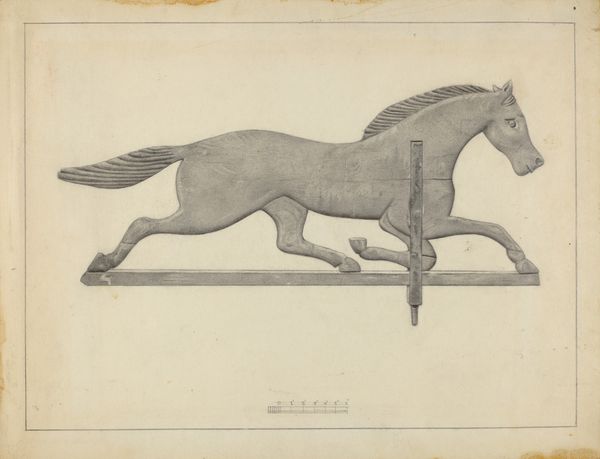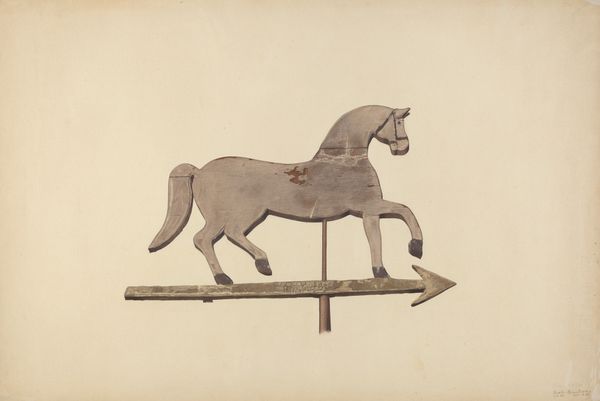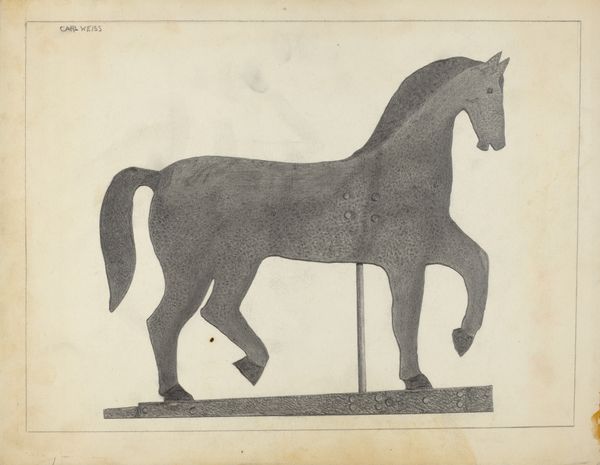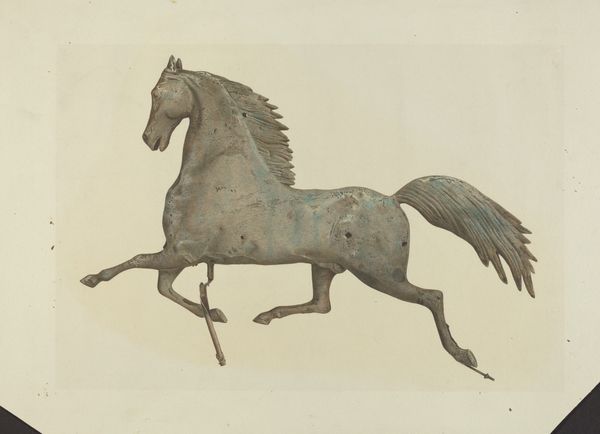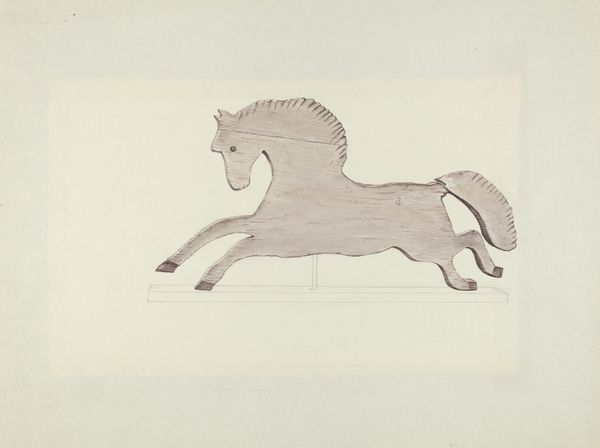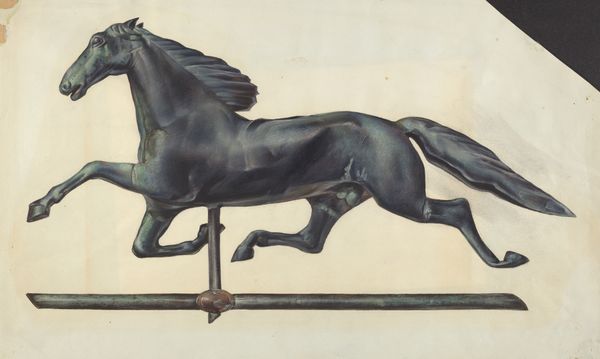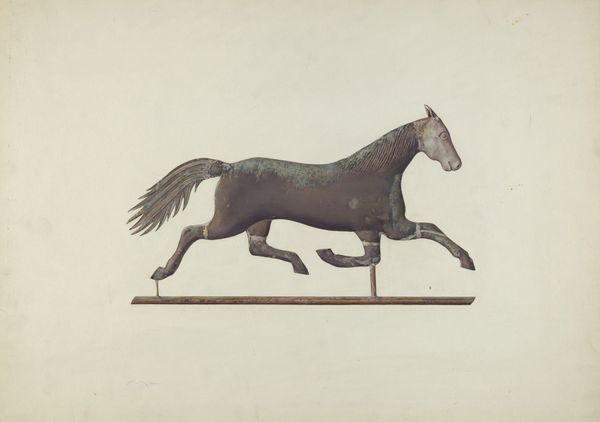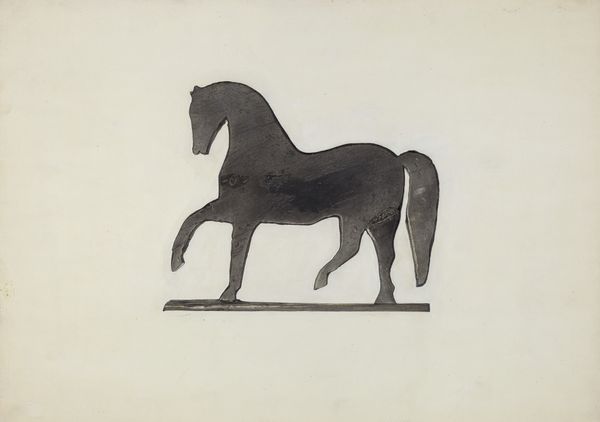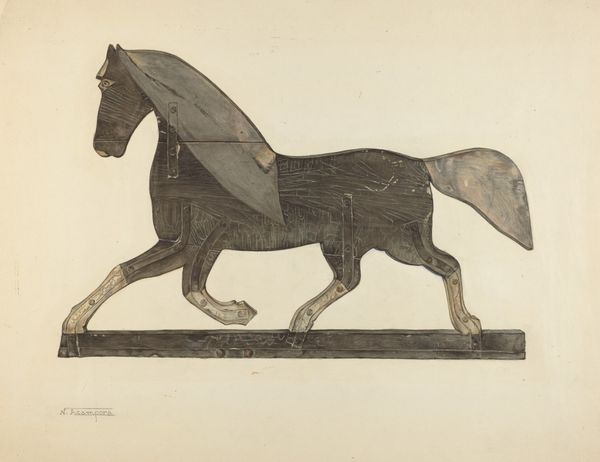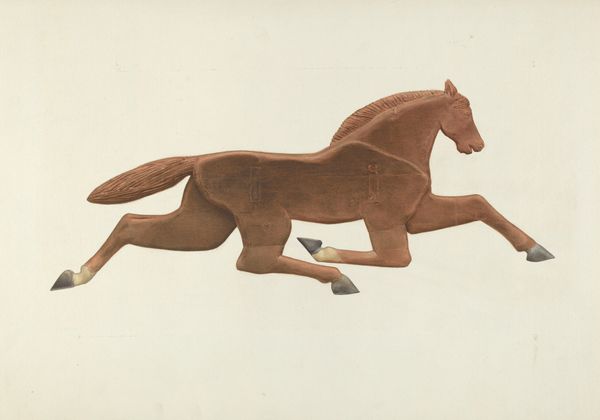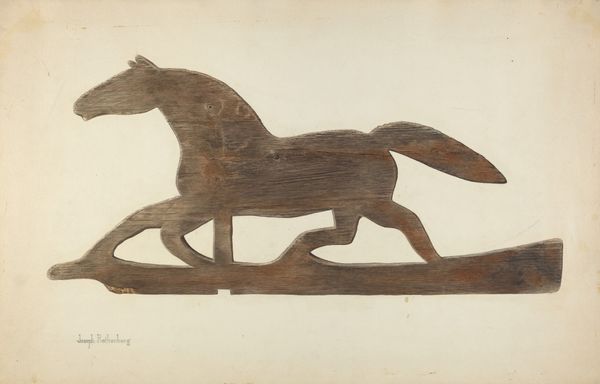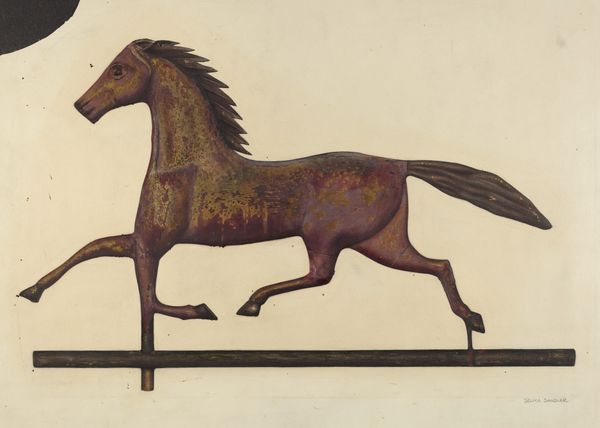
drawing, paper, pencil
drawing
caricature
caricature
paper
pencil drawing
geometric
pencil
line
realism
Dimensions: overall: 23 x 28 cm (9 1/16 x 11 in.) Original IAD Object: 35" wide; 33" high
Copyright: National Gallery of Art: CC0 1.0
Curator: This intriguing pencil drawing, dating from between 1935 and 1942, is entitled "Horse Weather Vane." The artist is listed as Filippo Porreca. What's your first impression? Editor: It strikes me as both whimsical and strangely austere. The shading is meticulously done, but the overall effect is rather flat, like a technical drawing with artistic ambitions. There's a stillness despite the implied motion of the horse leaping over the fence. Curator: I see it as an exercise in form. Consider the lines themselves—the confident curves of the horse against the rigid geometry of the fence. The play of light and shadow creates depth, but it also emphasizes the essentially linear nature of the work. Note how the artist captures the dynamism of a galloping horse purely through shape and contour. Editor: Yes, and those formal choices can't be separated from the era. Think of the context: the 1930s, the Great Depression. The weather vane, traditionally a symbol of prosperity and connection to the land, here is reduced to its barest elements. The almost diagrammatic presentation suggests a society stripped back to basics, contemplating its future. Where is the promise here? Curator: Interesting point. But consider the abstraction itself as a form of commentary. The horse, while recognizable, is simplified, almost stylized. This abstraction pushes it beyond a simple representation of an animal. Editor: But isn't the subject matter itself loaded? Horses have historically symbolized power, freedom, even nobility. By depicting one as a weather vane, constantly changing direction based on external forces, Porreca seems to be suggesting a vulnerability, perhaps even a loss of control. A commentary on economic hardship and its effect on stability. Curator: That might be reading a bit much into it. For me, the enduring interest is the beautiful austerity of line, its geometric structure. It demonstrates precision. Editor: And to me it suggests themes of uncertainty. The beauty, in both instances, lies in this piece's complex position at an historical crossroads. Curator: A worthwhile thought. It encourages reflection. Editor: Absolutely. Art as a vehicle for thought, that's its power.
Comments
No comments
Be the first to comment and join the conversation on the ultimate creative platform.
